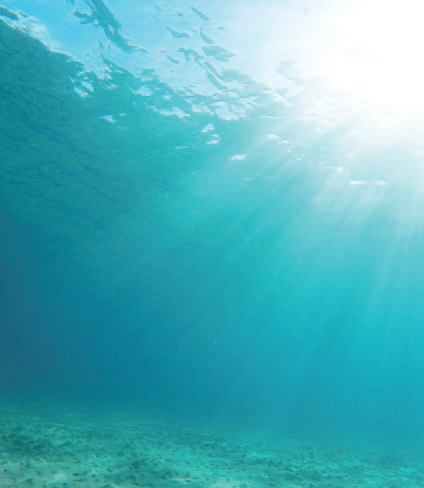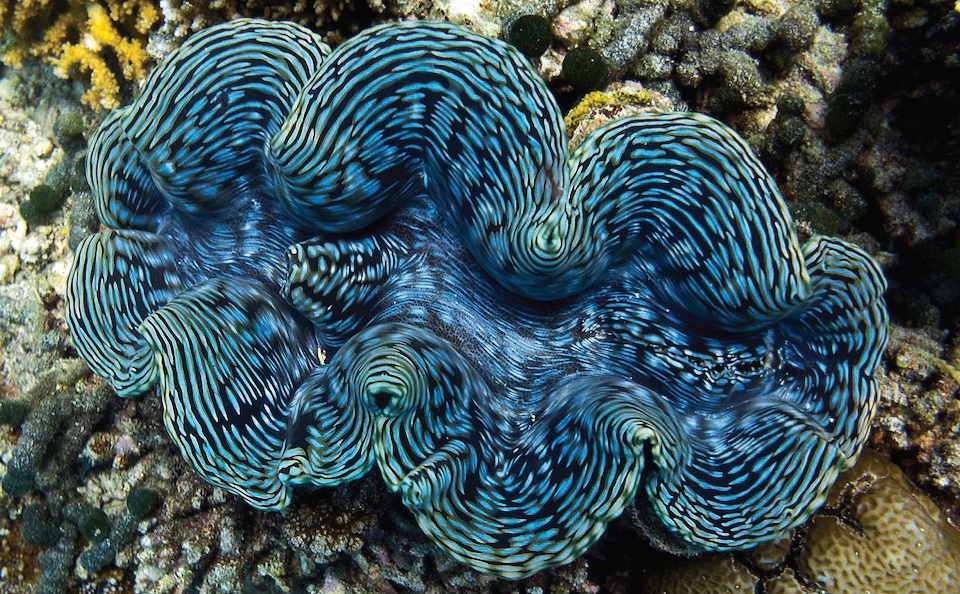Maximizing solar energy by emulating natural photobioreactor
Dr. Neil Canter, Contributing Editor | TLT Tech Beat March 2018
An artificial bioreactor that forward scatters light in a similar fashion to giant clams was developed.

© Can Stock Photo / MitaStockImages
KEY CONCEPTS
•
Researchers developed an artificial bioreactor that simulates the ability of the giant clam to efficiently provide light to algae that then undergo photosynthesis and produce sugars used by the clam for respiration.
•
An emulsification-evaporation strategy was used to produce microspheres from silica nanoparticles that scatter light in a similar manner to the iridocytes in the giant clam.
•
The polydispersed size of the silica nanoparticles were important in generating the correct forward-scattering behavior.
Emulating the very efficient conversion of solar energy to chemical energy through photosynthesis remains a key objective of researchers. Work is steadily ongoing to unlock the secrets of this natural process.
In a previous TLT article (
1), researchers demonstrated that the reason that the quantum efficiency of photosynthesis in the large pigment-protein complex known as photosystem I is 98% is because electrons, the key agents transferring energy, rarely move backward because that process, known as recombination, is inhibited. In contrast, artificial solar devices are much less efficient because electrons do move backward. If recombination occurred in photosynthesis, then the efficiency of photosystem I would drop by 26%.
Mother Nature also has developed very effective techniques for fully utilizing the solar flux that impinges on green plants. A case in point is the giant clams that populate the Pacific Ocean.
Alison Sweeney, assistant professor in the physics and astronomy department at the University of Pennsylvania in Philadelphia, became intrigued with the giant clams while working on another project. She says, “Giant clams developed a symbiotic relationship with algae over time. The clams figured out a very effective approach for efficiently transferring solar energy to the algae, which then undergo photosynthesis and produce sugars that diffuse into the clam for use in respiration.”
In investigating how the clam interacts with the algae, Sweeney discovered that clams contain optically active cells known as iridocytes on the surface of their mantle tissue, which forward scatter light to the algae that are arranged in vertical micropillars. Iridocytes are able to deliver an equal dose of sunlight to each algae cell, maximizing the efficiency of the solar energy. Iridocytes are spherical cells with average diameters between eight and 10 microns that contain stacks of 100-nanometer platelets.
Sweeney says, “In effect, the giant clams are acting as natural photobioreactor systems by using solar energy to grow algae that generate chemical energy through photosynthesis.” Figure 2 shows an image of a giant clam.
 Figure 2. Synthetic iridocytes have been developed based on silica nanoparticles that forward scatter light in a similar manner to spherical iridocytes present in giant clams. (Figure courtesy of the University of Pennsylvania.)
Figure 2. Synthetic iridocytes have been developed based on silica nanoparticles that forward scatter light in a similar manner to spherical iridocytes present in giant clams. (Figure courtesy of the University of Pennsylvania.)
Past attempts were made to develop artificial photobioreactors that can deliver equal amounts of sunlight. Sweeney says, “Efforts focused on using fiber optic cables but suffered from the inefficient use of solar energy and not figuring out a way to allot the energy equally to all cells.”
The logical approach for preparing an artificial photobioreactor is to develop an artificial iridocyte that operates in a similar manner to the natural ones in the giant clams. Sweeney says, “Past strategies for producing synthetic iridocytes involved the co-assembly of diblock copolymers using surfactants or triblock copolymers in oil-in-water droplets. But the length scales within the particles were not consistent with what was seen in the giant clams.
A new approach is needed to produce an artificial photobioreactor that emulates the giant clams. Such an approach has now been reported.
Emulsification-evaporation strategy
Sweeney and her colleague Shu Yang, professor in the department of materials science and engineering at the University of Pennsylvania, developed synthetic iridocytes that perform in a similar manner to those present in the giant clam. Sweeney says, “We evaluated the structure of the natural iridocytes in the giant clams and by doing calculations determined the best approach for emulating them. Our approach was to embed micron-size composite particles fabricated from silica nanoparticles sintered into micron-scaled spheres.”
The researchers used an emulsification-evaporation strategy to produce microspheres within silica nanoparticles. Initially a water-in-oil emulsion was prepared from hexadecane, water and a nonionic polymeric surfactant. To this blend, an aqueous solution of pre-dispersed silica nanoparticles was added to the oil layer. Emulsion droplets were prepared by vigorous agitation and followed by evaporation at 65 C for 20 hours in an oven. The composite particles were then introduced into an aqueous mixture with gelatin, which was melted at 65 C for 30 minutes, cast on a flat polydimethylsiloxane surface, cured and gelled.
Sweeney says, “Through this approach, we were able to control the size of the silica nanoparticles and produce particles that are similar in size to those iridocytes in the giant clam. The silica nanoparticles were organized into close-packed hexagonal arrays within the microspheres. Clam-like forward scattering of light was achieved in this manner due to the high refractive index of the microspheres and the relatively lower refractive index of the gelatin.”
The nanoparticles exhibited average diameters between 80-200 nanometers while the microspheres had average diameters between five and 10 microns. Sweeney says, “The polydispersed size of the nanoparticles proved to be beneficial in achieving the correct forward-scattering behavior important for developing a synthetic photobioreactor.”
Experimental evaluation showed that a gelatin film with the embedded microspheres displayed comparable forward light scattering to what was observed in the giant clam. Future work will involve producing a synthetic bioreactor by growing algae in an environment with the microspheres. Sweeney says, “We are now working to construct a hydrogel bioreactor that grows algae. Challenges we need to overcome include how to keep the bioreactor clean and how to organize the algae in the proper micropillars to make sure that the light is scattered in equal proportion to each algal cell.”
Additional information can be found in a recently published paper (
2) or by contacting Sweeney at
alisonsw@physics.upenn.edu.
REFERENCES
1.
Canter, N. (2017), “Evidence for high efficiency of photosynthesis,” TLT,
73 (12), pp. 14-15.
2.
Kim, H., Vahidinia, S., Holt, A. and Sweeney, A. (2017), “Geometric design of scalable forward scatterers for optimally efficient solar transformers,”
Advanced Materials,
29 (44), DOI: 10.1002/adma.201702922.
Neil Canter heads his own consulting company, Chemical Solutions, in Willow Grove, Pa. Ideas for Tech Beat can be submitted to him at neilcanter@comcast.net.